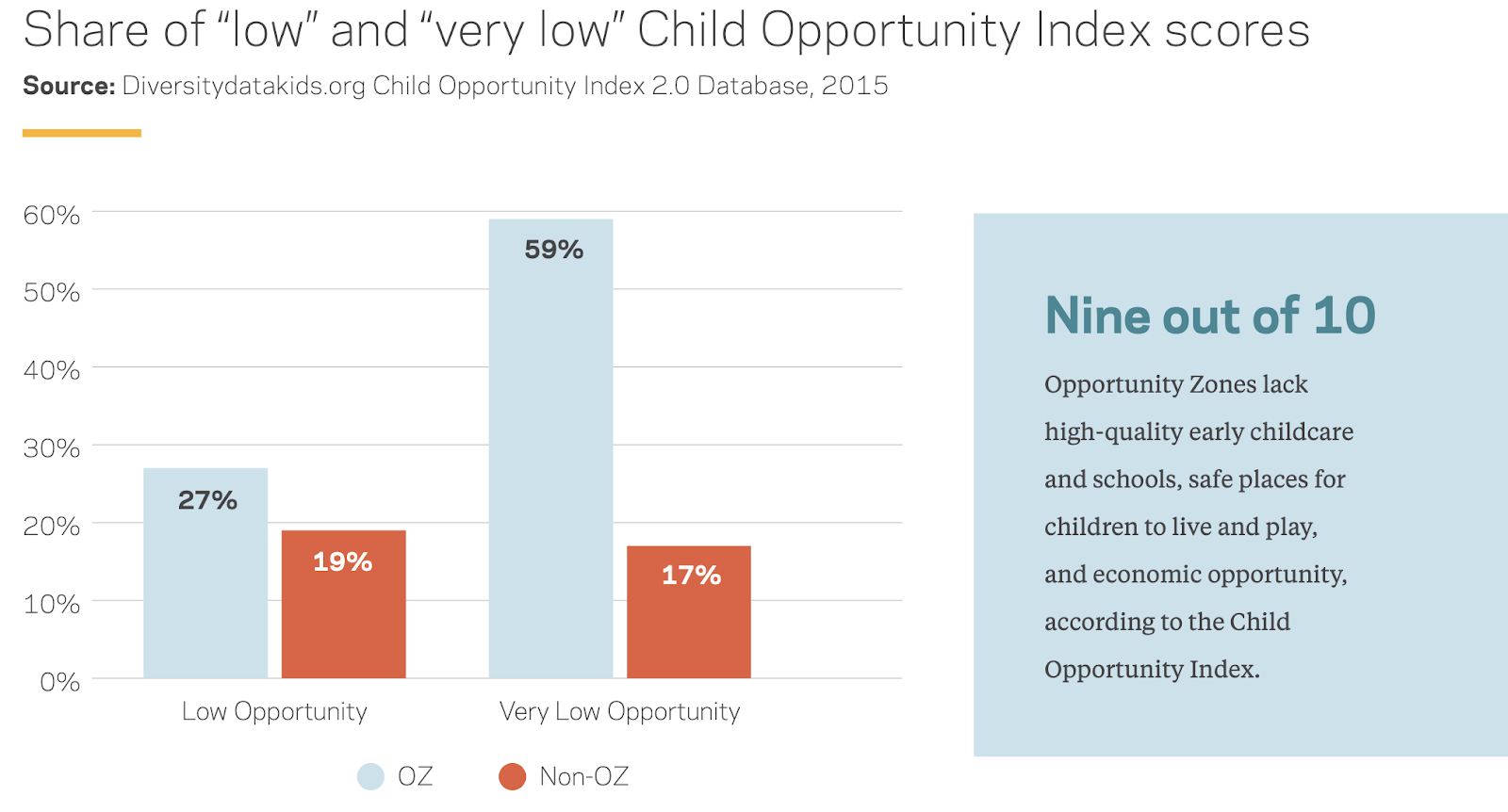Advancing Education and Child Development in Opportunity Zones

As schools grapple with how to safely welcome back students, the deep economic and social divisions that exist in America have come into sharp focus. In distressed neighborhoods, the COVID-19 pandemic has fractured support ecosystems that many families rely on. As kitchen tables turned into classrooms, working parents in low-income communities scrambled to find affordable childcare, and teachers found that their students were disconnected from the virtual learning environment. Conversely, well-resourced families were better positioned to navigate disruptions caused by the pandemic, as parents had the flexibility to work from home and provide their children with the necessary resources to adjust to remote learning.
As families adapted to a new normal, disparities between distressed and prosperous communities became increasingly evident as low-income families bore the brunt of disruptions to daily life. Of the 7.5 million children living in Opportunity Zones, 40 percent live in single-parent households. As remote learning continues and access to affordable childcare remains limited, these parents may face impossible decisions around limiting hours or leaving the workforce all together and providing for their children on reduced household budgets.
Further, 22 percent of children in Opportunity Zones do not have a computer with internet access. Students lacking the technology required for digital learning have been forced to attend class by accessing public internet on handheld devices or have disengaged from school until they can return to the classroom. The struggles of the digital divide and inadequate access to affordable childcare have long painted the nation’s social and economic landscape, but the pandemic has elevated the consequences of these inequities.

In Advancing education and child development in Opportunity Zones, the Economic Innovation Group examines the conditions faced by children growing up in Opportunity Zones and how their environment influences their long-term prospects.

A wide-variety of use cases are highlighted in the report to show how Opportunity Zones investment can help finance new schools, create space for affordable childcare, build community centers, develop affordable homes, grow education technology businesses, and more. Notably, the report features investment-ready projects in O’ahu, HI, Birmingham, AL, and Atlanta, GA, that are poised to enhance the lives of children and their families.

The report also provides strategies for leveraging the tax policy and census tract designation to drive private investment to projects and businesses that support improved child outcomes and help Opportunity Zones’ youngest residents realize their full potential. Examples of recent Opportunity Zones partnerships and policies are provided to demonstrate how government leaders, anchor institutions, and funders can help attract investment in their communities by:
- Grounding Opportunity Zones strategies in education and childcare.
- Convening stakeholders to advance OZ strategies and investment ideas.
- Leveraging vacant, underutilized, and surplus property.
- Wielding their suite of financing tools to support high-impact projects, businesses, and community organizations.
For those inspired to take action, view the report to learn about three investment-ready projects that are poised to expand opportunities for low-income parents and children. The accompanying guide, Strategies for hosting an Opportunity Zones convening, provides meeting blueprints for those who also want to use the report to rally their community behind Opportunity Zones projects and frameworks.


